
Have you ever been out walking after the first heavy rain of the summer, when the ground has been dry and cracking and now everything is settling back in and refreshed? If you have, you may have noticed a deeply pleasant, musky odor after the rain.
This odor is called petrichor, and it’s an extremely interesting phenomenon. Read on to find out more about why petrichor exists, and how it relates to human development in our environment.
Petrichor is a particular scent that is released from the earth before, during, and after a rainfall. This scent is strongest after the earth has gone through a long period of dryness, and helps us to know when rain is on the way.
“Petrichor combines two root words from Greek origins: petra, meaning stone, and ichor, meaning the blood of the gods.”
The word petrichor itself is an interesting one. It combines two root words from Greek origins: petra, meaning stone, and ichor, meaning the blood of the gods. Australian scientists who first coined the term combined them to form the word we use today: petrichor [2].
Fun fact: Humans can smell petrichor at concentrations as low as five parts per trillion. For reference, a shark can smell blood at concentrations of one part per million, so humans are better at seeking petrichor in the air than sharks are at seeking blood in the water [1].
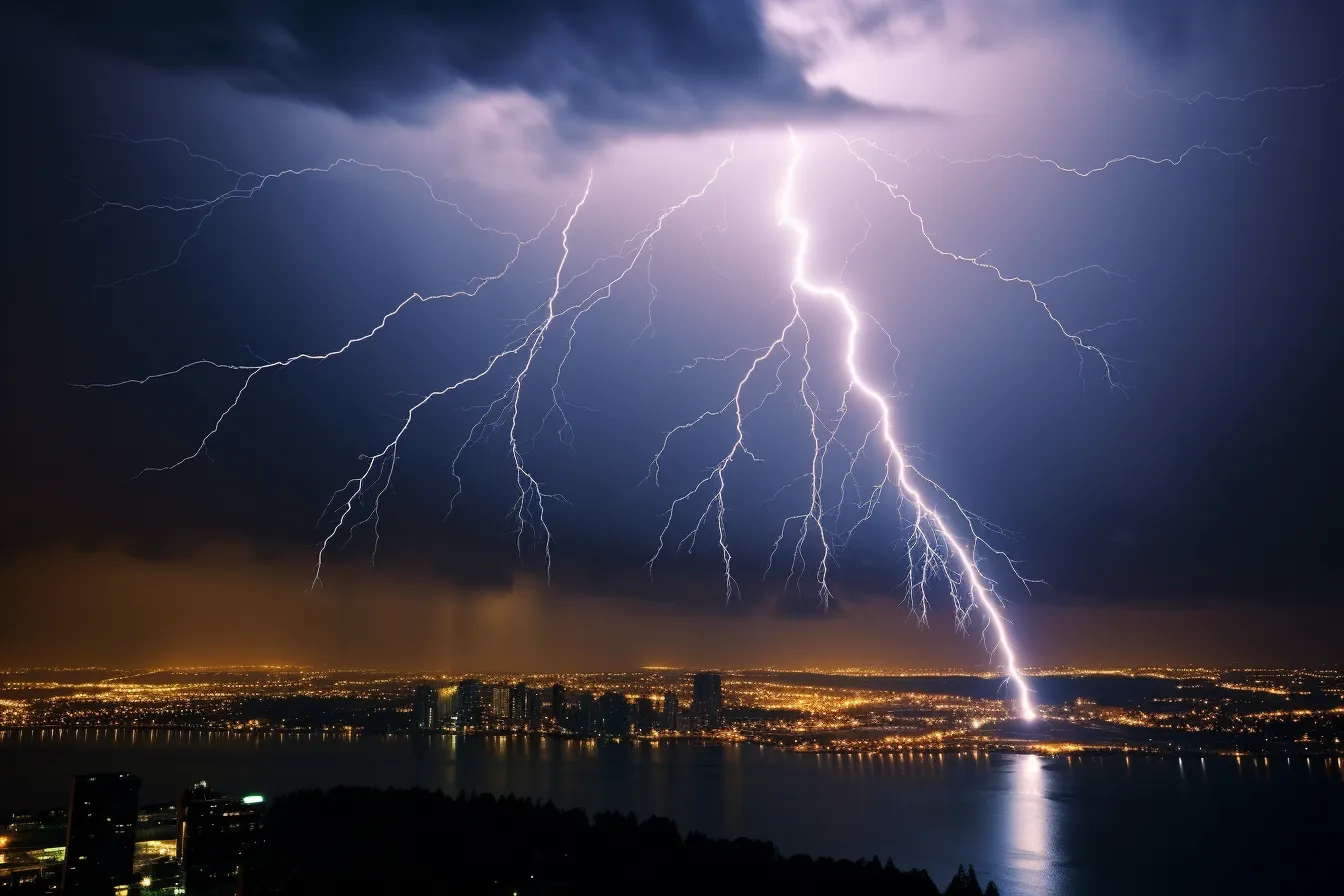
The smell of petrichor is not carried along with the rain itself—it’s a result of how the rain affects the surrounding environment. Petrichor occurs when rain hits the ground and releases certain chemical compounds. These compounds come from multiple sources, including lightning strikes, bacteria in the soil, and surrounding plants [3].
Ozone is often released during thunderstorms and can be associated with a bleachy, chlorine-like smell. This is formed through lightning strikes, when oxygen and nitrogen found naturally in the atmosphere combine through the intense force of lightning formation.
This creates nitric oxide and ozone. The ozone is then carried down from the atmosphere by the precipitating rain, and is released into the air when the rain hits the ground. Ozone is three oxygen molecules strapped together, whereas oxygen is usually found in pairs (it is a diatomic molecule).
While ozone is one contributing factor to petrichor, there are others. We know this because petrichor doesn’t smell like bleach. The other components of petrichor include geosmin and plant oils.
Geosmin is a bacterial compound that is secreted into the soil throughout the bacteria’s lifespan. When raindrops hit the soil, the geosmin built up in the ground is released into an aerosolized form, so it can reach our nose and is detected by our olfactory nerve (the part of your nose responsible for taking smell signals to the brain) [3].
The last components of petrichor are plant oils. These accumulate in dry weather as plants go about their daily business. When it rains, the same aerosolization happens to the plant oils as to geosmin, and this contributes to its earthy scent [3].
This aerosolization can occur because as rain hits the ground, it actually creates and traps little air bubbles. These air bubbles then travel through the atmosphere to our noses [2].

Geosmin is the part of petrichor that humans are spectacularly good at detecting in the air. Although this may seem like a peculiar superpower for humanity to have developed, it plays an important role in our history [1].
“The ability to smell where rain is, particularly after a long drought, was the unique talent that gave us the edge for finding sources of water easily.”
Back when humans were nomadic, and water sources were unstable or hard to find, the ability to smell petrichor was essential to our continued survival. The ability to smell where rain is, particularly after a long drought, was the unique talent that gave us the edge for finding sources of water easily.
Unlike other animals, humans haven’t developed very good strategies for going without water. Some animals only need to drink every few months. Humans will struggle greatly if we go without water even for a single day, and will die from dehydration after only a few days.
So, you can appreciate how useful the ability to smell petrichor would have been even in our relatively recent history, before we got more regular sources of water. The ability to smell petrichor is still put to good use by those who are often out in nature as an early warning system for when rain is coming.
For most people, the smell of petrichor is now just a lovely scent released every so often by natural weather events. Next time you smell petrichor, try imagining how it would have felt as humans early in our biological history.
The chance of smelling petrichor is greatly increased if it is the first rain of the season, or after a long dry spell. If you love the smell of petrichor and just can’t wait to smell it again, try using precipitation forecasts to predict if you will get the opportunity in the near future. That way you can carve out some time to sit in nature and absorb the relaxing scent.
One such precipitation forecast is my app Sonuby. It is a weather forecasting app that offers pre-built weather reports, containing only relevant forecasts. For example, the “Daily Life” report offers a few handy forecasts to seek out petrichor, such as:
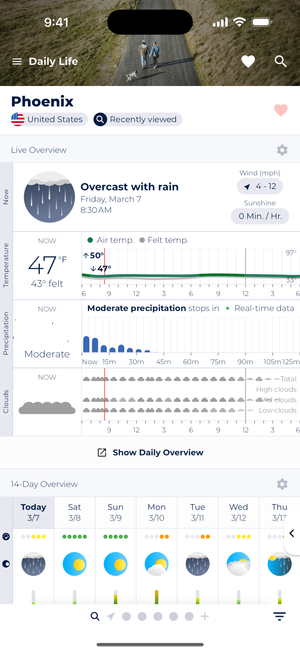
Sonuby’s Live Overview feature helps track precipitation events - perfect for catching that first rain after a dry spell when petrichor is strongest.
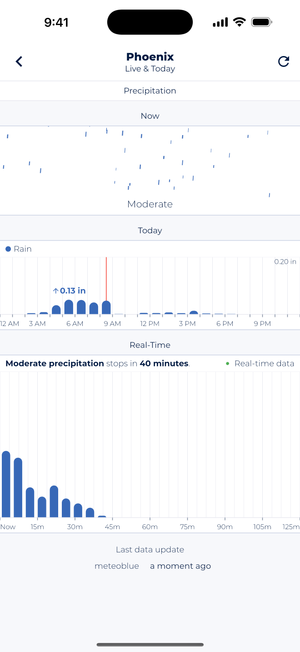
Real-time precipitation forecasts show when rain is expected to begin and end, allowing you to plan the perfect time to experience petrichor.
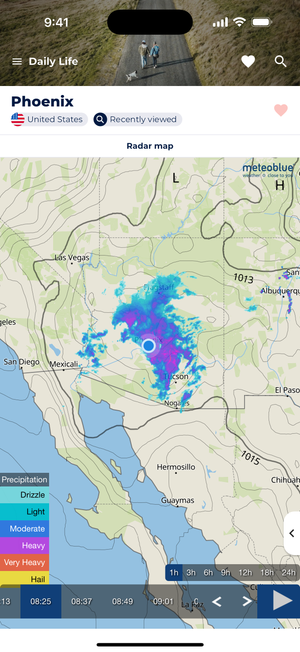
The detailed radar map displays precipitation intensity, helping you locate nearby rainfall - essential for finding areas where petrichor will be most noticeable.
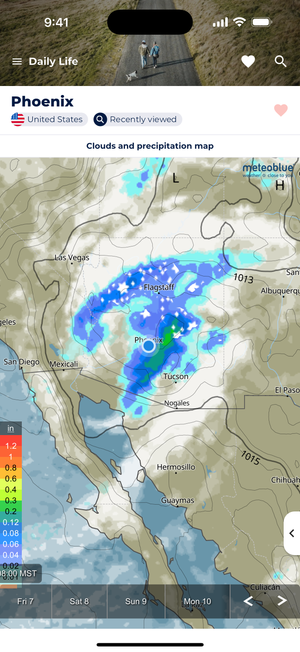
The clouds and precipitation map provides a longer forecast of weather systems, ideal for tracking predicting rainstorms that might create petrichor conditions.
By selecting the “7-Day Meteogram” forecast in the “Daily Life” report, you can find the temperatures and precipitation probabilities for the next seven days. This allows you to look for hot days, followed by rainy spells.
If you are not looking to get caught out in rainy weather while looking for your petrichor hit, try checking both the “Hourly Forecast” rainfall amount and probability, in conjunction with rainSPOT and the radar map. This will make planning your petrichor trip an absolute breeze.
While most of the forecast formats in Sonuby are probably quite familiar to you, rainSPOT is worth explaining in more detail. It shows the amount of precipitation around any selected location, and acts as a simplified rain radar. It is ideal for a quick check of precipitation, any time.
Looking for petrichor is just one way you can use Sonuby to prepare for different scenarios. It also offers comprehensive reports for skydiving or surfing, making preparing for those activities a breeze. It is a great choice for those who want only the relevant forecasts related to a specific activity. Even more reports will be added in the future.
And the best thing about Sonuby: forecasts are available for anywhere on the globe, which means even if you are off on holiday, you can always search out the ideal location to experience that calming petrichor scent.
Sources:
[3] www.acs.org